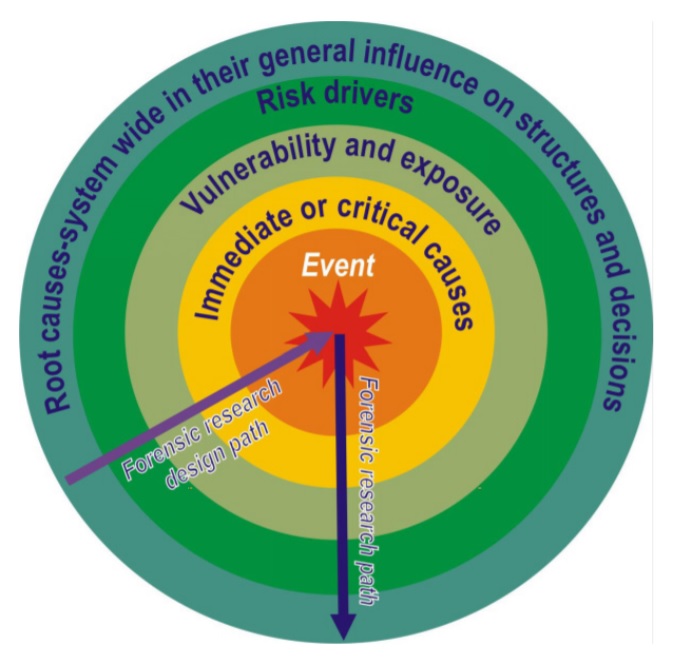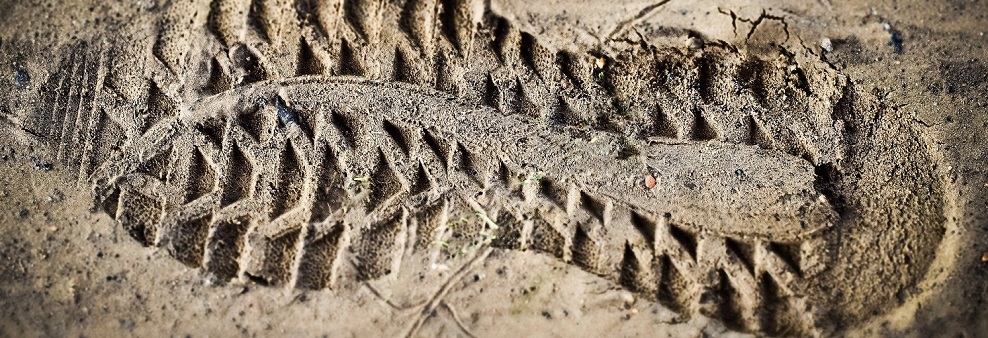Forensic Disaster Analysis
With the FORIN project, the international IRDR program developed the Forensic Disaster Analysis (FDA) – an innovative approach to dealing with disasters. By linking research perspectives across disciplines, FDA enables a comprehensive understanding of causes, processes and effects.
© Pixabay
Origin of forensic disaster analysis
According to the Gabler Business Dictionary, the term “forensics” comes from the Latin (lat. forum for marketplace, forum), against the backdrop of the court proceedings and sentencing ceremonies held publicly in the marketplace in ancient Rome. Today, forensics is mainly used in the investigation of criminal cases and refers to the systematic identification, analysis and reconstruction of actions and processes in various sub-areas (e.g. forensic psychiatry, toxicology or age diagnostics).
With the Forensic Investigations of Disasters (FORIN) project, the international research program “Integrated Research on Disaster Risk” (IRDR) further developed the field of forensics in the context of disaster management. In Forensic Disaster Analysis (FDA), the term “forensics” refers to the combination of research approaches and methods from different disciplines with the aim of creating the most comprehensive overall picture of the event possible, in addition to the systematic approach to analyzing and reconstructing disasters and their triggers (IRDR 2011; CEDIM, 2020; KIT 2020). This research approach makes it possible to reproduce and analyze the complex interactions between damage and natural events (KIT 2020). As one of the players in forensic disaster analysis, the Center for Disaster Management and Risk Reduction Technology (CEDIM) – an interdisciplinary research facility of the Karlsruhe Institute of Technology – added the component of event proximity (ibid.). This means that an analysis should be available a few hours to days after the event (ibid.).
Features of forensic disaster analysis
According to the FORIN report, the methods and reporting forms used in the conventional processing and assessment of loss events leave many questions unanswered, especially if they are primarily discipline-oriented. Accordingly, the focus is usually on investigating the purely physical background of the causes or the technical and structural consequences of the event (IRDR 2011). Preparations for disasters, such as the use of early warning systems, emergency aid, reconstruction measures or political measures, are also assessed (ibid.). However, these approaches usually do not deal with the often underlying long-term effects, which only lead to a disaster event in combination and through complex cascading effects and/or interactions between the various systems (ibid.).
This is where forensic disaster analysis comes in. In order to enable qualitative recommendations for action and intervention measures, the CEDIM analyses focus mainly on the interactions of the triangle of natural events, technical facilities/critical infrastructures and social structures (KIT 2020). This means that the focus is not only on analyzing the causes and consequences of disasters, but also on looking at the framework conditions that promote and reduce damage. In addition, the aim of CEDIM’s FDA approach is to carry out the analyses as soon as possible after a disaster and to publish the results. Depending on the event and the available resources, initial statements about the extent of a disaster, its consequences and economic damage are made just a few hours to a few days after the event. These rapid analyses are helpful in order to be able to initiate situation-specific measures as quickly and effectively as possible (Kunz 2019 in DKKV Newsletter 04/2019).
Damage estimates are made using statistical methods that link the footprint of the event (e.g. flooded areas, shake maps) with information on comparable past disasters and with key figures for the affected regions (building data, Human Development Index (HDI), gross domestic product, level of education, etc.) (Daniell, 2014; Daniell et al., 2017). The inclusion of both successful and failed disaster management helps to better understand the circumstances under which a natural event becomes a disaster (IRDR 2011).
Interdisciplinarity plays a particularly important role in forensic disaster analysis. Various approaches from (natural) science, technology, remote sensing and crowdsourcing are used here (Kunz et al., 2013; Wenzel et al. 2013). The latter refers to the use of contributions from social media in order to access information quickly from the population (ibid.). However, not only different research disciplines, but also different interest groups and politicians are included in order to ensure optimal synergy and effectiveness of the analyses and balance between the core disciplines (IRDR 2011).

Design and Research Path of forensic disaster analysis (Oliver-Smith et al. 2016: 33)
Figure 1 illustrates the approach of forensic disaster analysis according to Oliver-Smith et al. (2016). The “design path”, running from the outside in, shows the background idea of the analysis. It starts with the “root causes” of the process, which influence structures or decisions, for example. The interaction with corresponding risk drivers and the vulnerability of the location then leads to the causes that triggered the event. Building on this, the “research path” shows the actual path of the analysis after the disaster has occurred. Here the path leads outwards, with the identification of the root causes as the end point. This way of working ensures that it is possible to identify as completely and as thoroughly as possible how an event could become a disaster.
Research approaches in Forensic Investigations of Disasters (FORIN)
- Consideration of processes that have led to a disaster in the past in order to be able to trace the development of these over time.
- Creation of disaster scenarios: Based on known hazards, analyzing events that may occur in the future that could potentially contribute to disasters.
- Comparing the effects of a disaster event on different social groups in order to identify the underlying causes of the disaster.
- Literature research to identify consistent and contradictory statements from different studies.
Objectives of (FORIN) Forensic Disaster Analysis
- Highlighting the local manifestations of disaster causes
- Promoting a ‘learning culture’ among all stakeholders
- Promoting communication between research and practice to build a common discourse
- Emphasizing sustainability in risk management and risk reduction
- Stronger integration of human impact reduction
- Developing case studies to highlight risk drivers
Current Information
FDA Task Force Mailing List
The Forensic Disaster Analysis (FDA) Task Force at the Karlsruhe Institute of Technology (KIT) is a central component of the Centre for Disaster Management and Risk Reduction Technology (CEDIM). Immediately after major natural disasters, it analyses their causes,...
Created: April 2025



